The Clearest Guide to Cobot Safety You'll Read Today

Posted on Jan 29, 2021 in Collaborative Robots
5 min read time
Collaborative robot safety is supposed to be simple… but it can sometimes seem infuriatingly complex. The marketing suggests that cobots are inherently safe in all situations… but then you get started and it turns out that this is not true for all applications!
Are cobots really safe?
Why is cobot safety not as simple as it first appears?
How can you tell if your application will allow for safe cobot operation?
Clarity is not very common in the world of robotics. It feels like you need to know a lot just to get started with a simple robot application. This is probably because robotics has long been a specialist field.
When collaborative robots first came along, they promised to be a much more accessible form of robotics (and they are).
The promise was that cobots would be safe to operate around humans, no questions asked.
In reality, the issue of cobot safety has never been so simple.
For example, most cobot applications don't require any extra safety features. However, our new palletizing application solution does require safety devices.
You might be wondering… why?
Are collaborative robots really safe?
Yes!
That's the answer. Cobots are really safe to operate around humans.
They are specifically designed to be safe around people. That's what makes them collaborative. If you use the robots in a safe manner then they are safe.
As I say, there are elements of subtlety to this — e.g. What does it mean to use them in a "safe manner"? — but, in general, cobots are as safe as they claim to be.
Why are cobots safe?
The reason that cobots are safe is that they have been designed to comply with safety standards.
Specifically, these standards ensure that any action that the robot performs cannot injure or harm a person. If the robot collides with someone, it should never do so with enough force that the person would be hurt.
This makes cobots very different from traditional industrial robots. If you walk into the path of an industrial robot, it will hit you with its full force and won't even detect that you are there. People have died this way (though very few).
Cobots are different because safety is the prime concern when they are designed. With other robots, performance is usually the prime concern.
This is not to say that cobots have lower performance. In fact, raising performance is one of the reasons that you might choose to use cobots in a "less safe" way…
What features make a collaborative robot safe?
To understand the slight complexity of cobot safety, it's useful to understand what features they are designed with to make them safe.
The core standard that cobots need to comply with is ISO/TS 15066. This is an international standard that specifically addresses the safety requirements of collaborative robots. Our eBook ISO/TS 15066 Explained is a good place to go if you want to find out more about it.
Examples of cobots features that make them safe are:
- Power, force, and torque limits — A force-limited robot will not apply a force that is above its safety limits. This can mean the force applied at its end effector, the torque applied by each joint, and/or the power it draws. If it does breach the limit, it will stop immediately.
- Speed limits — The robot will not move fast enough that a collision at full speed with a person would cause harm. This is why cobots often move slowly, even though they are capable of moving faster.
- Safety-rated stop modes — Cobots have several levels of stop mode depending on the type of safety event that has occurred. For example, an "emergency stop" will only happen in emergencies but a "protective stop" might be employed when a person enters the robot's workspace.
- Speed and separation monitoring — Some applications, like the Robotiq Palletizing Solution, require extra safety sensors to detect when a person enters the robot's workspace. This uses a feature called speed and separation monitoring.
- Ergonomic design — Collisions aren't the only potential danger with robots. Cobots are also designed to be ergonomic so that they can't injure a person if, say, their hand was trapped between the robot's joints.
In some cases, you might want to remove safety features for performance reasons, as I'll explain in a moment.
How to ensure your cobot application is safe
All these features give the robot the capability to be safe. However, the robot will only be safe if you use it safely.
How do you ensure that your application will be a safe one?
The answer — which you may have heard before — is that you need to perform an adequate risk assessment.
Why do I have to do a risk assessment?
Risk assessment is so important for collaborative robots because every application is different. The way you use your robot will determine the safety of yours.
For example, think about the safety implications of a robot that has a foam probe as an end effector versus the same robot with a chainsaw as an end effector. Everything else about the application would be the same but the safety implications would be very different.
A risk assessment will help you determine the specific safety requirements of your unique application.
How to perform a cobot risk assessment
Making your risk assessment can be quite simple.
The best way to get started is to download a copy of our eBook about cobot risk assessments.
It guides you through the process of creating a risk assessment for your application.
Why the palletizing application kit needs a safety device
For some people, the confusion of cobot safety comes when you are required to add extra safety features. This usually happens when you want to disable particular safety features on your cobot.
The most common example is when you remove the speed limits so the robot can move faster.
One thing to note is that operating a palletizing application without a safety device is only possible at a very low speed.
Why?
Palletizing is an application that is intrinsically unsafe, as it involves moving multi-kg boxes at high horizontal speed at head level. In most realistic use cases, if you want to operate at full speed, it is required to safeguard the palletizing cell.
What aspects of cobot safety are you still uncertain about? Tell us in the comments below or join the discussion on LinkedIn, Twitter, Facebook, or the DoF professional robotics community.

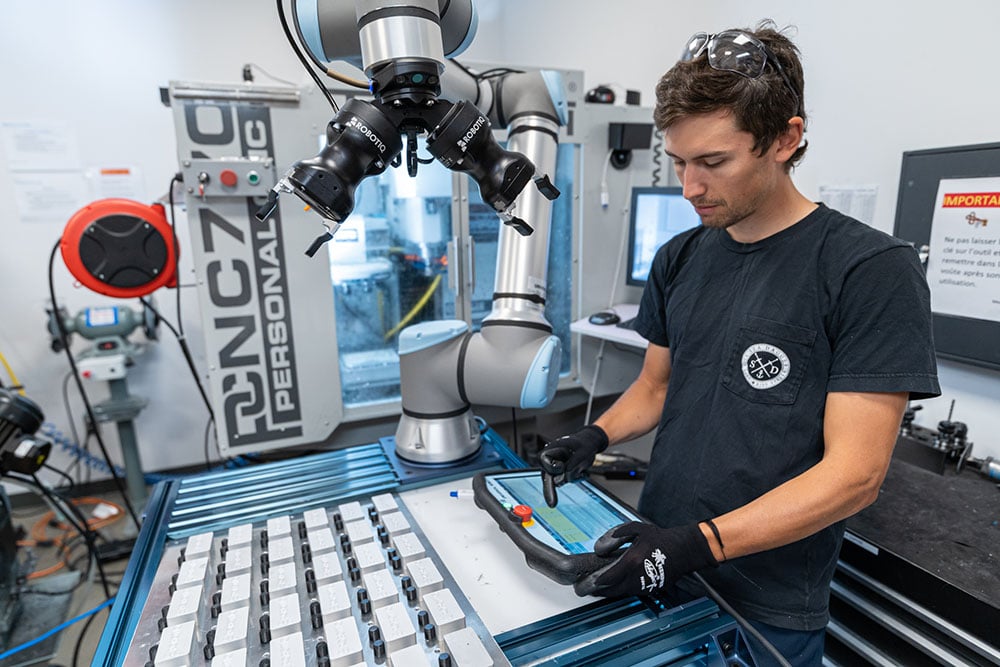

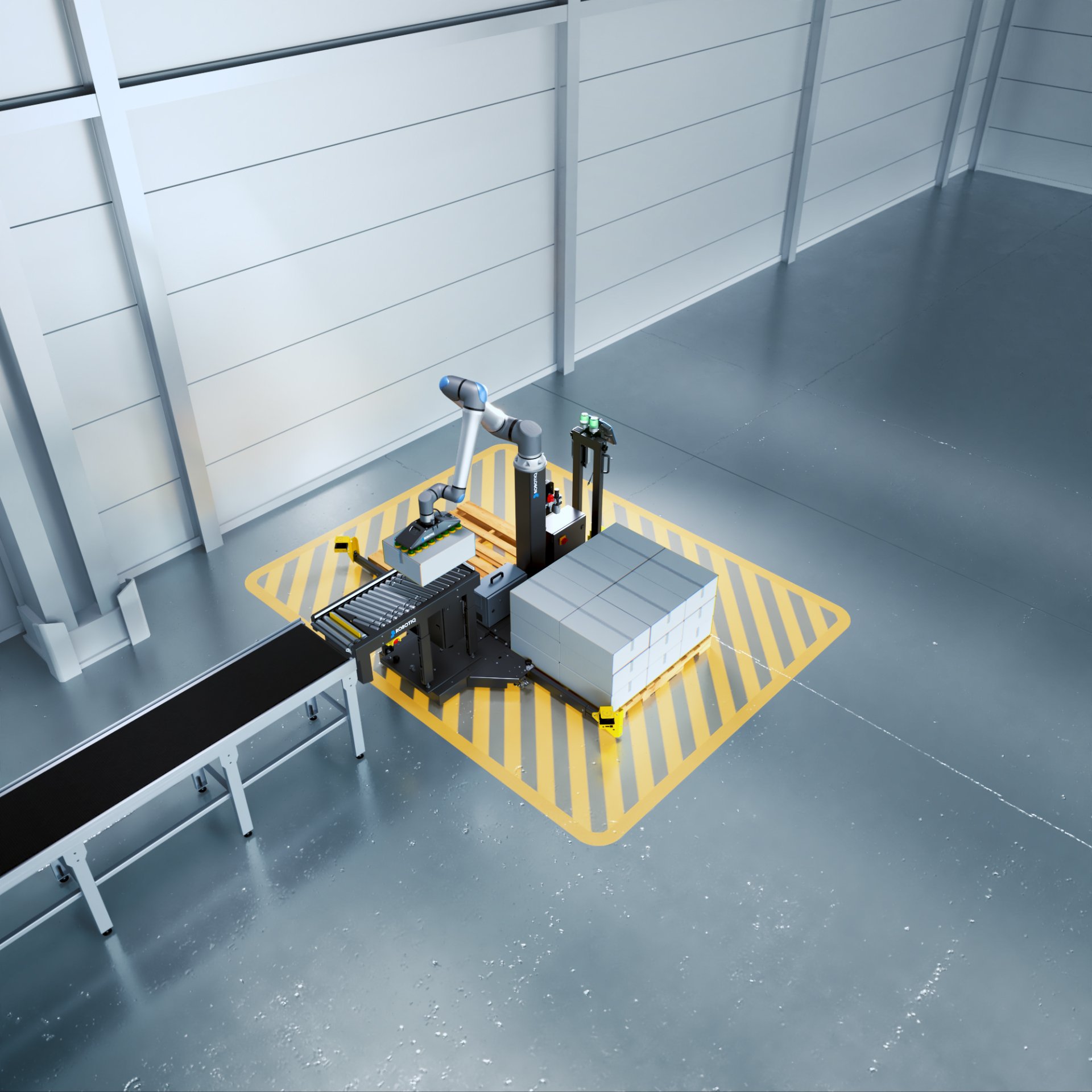

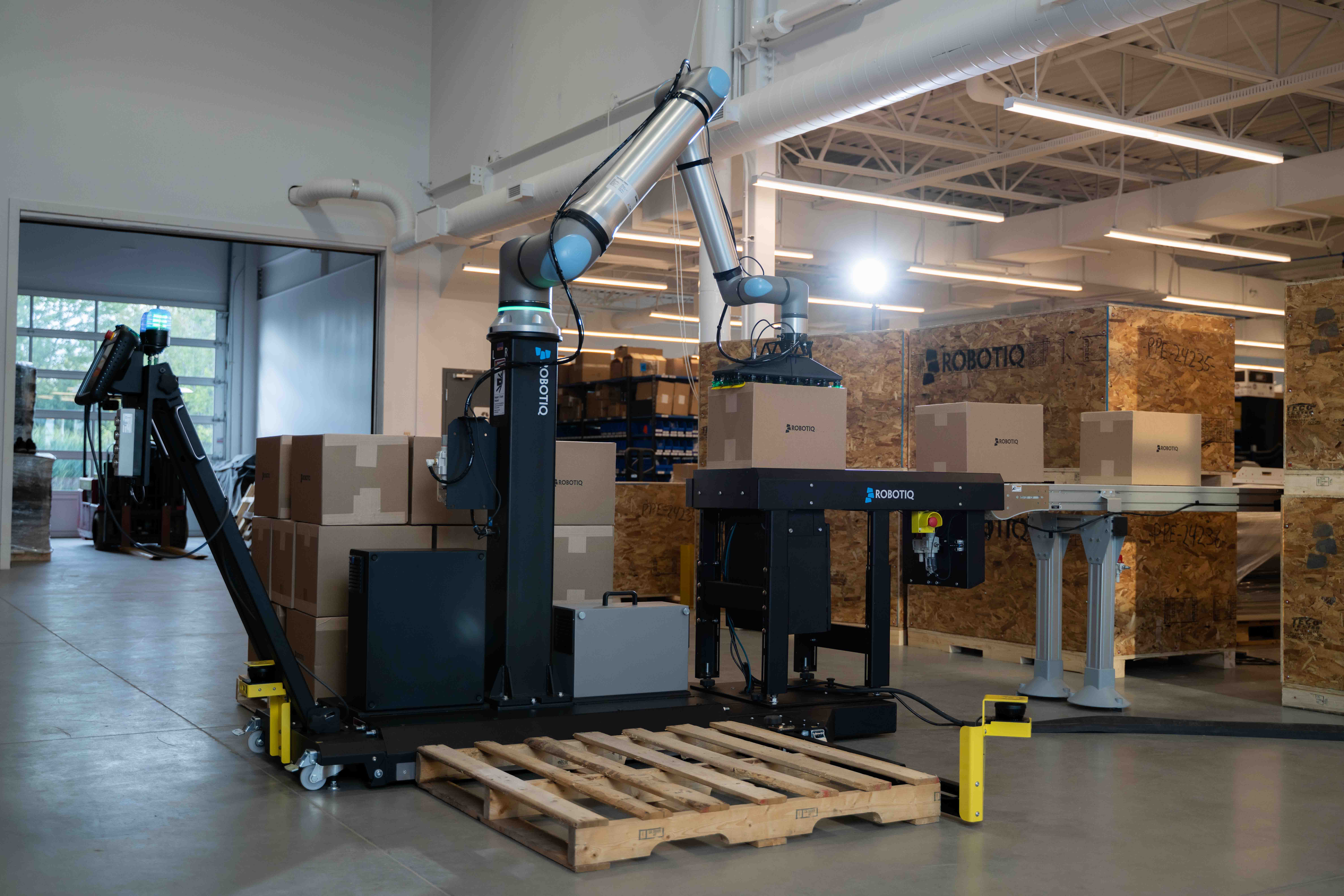
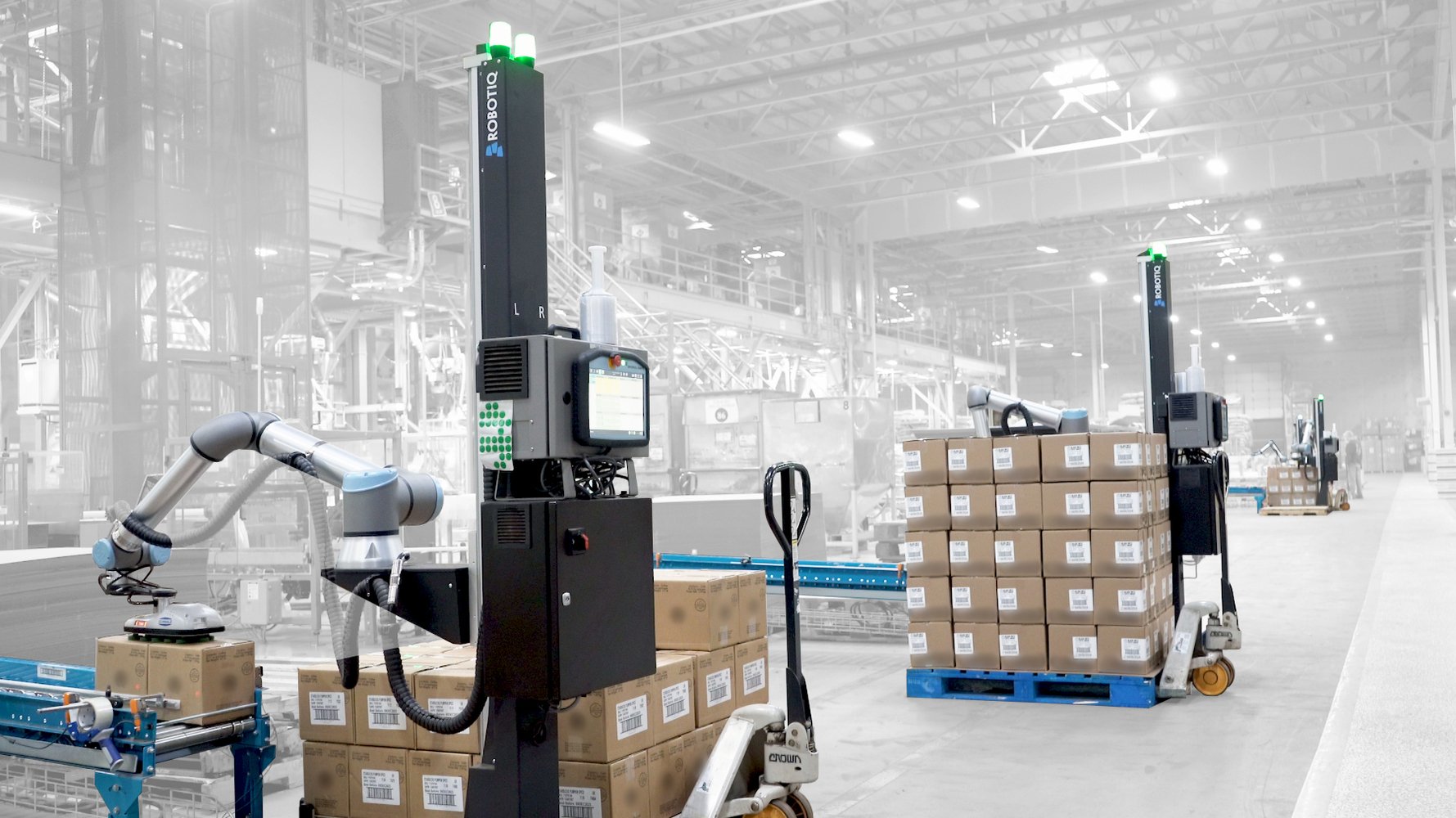
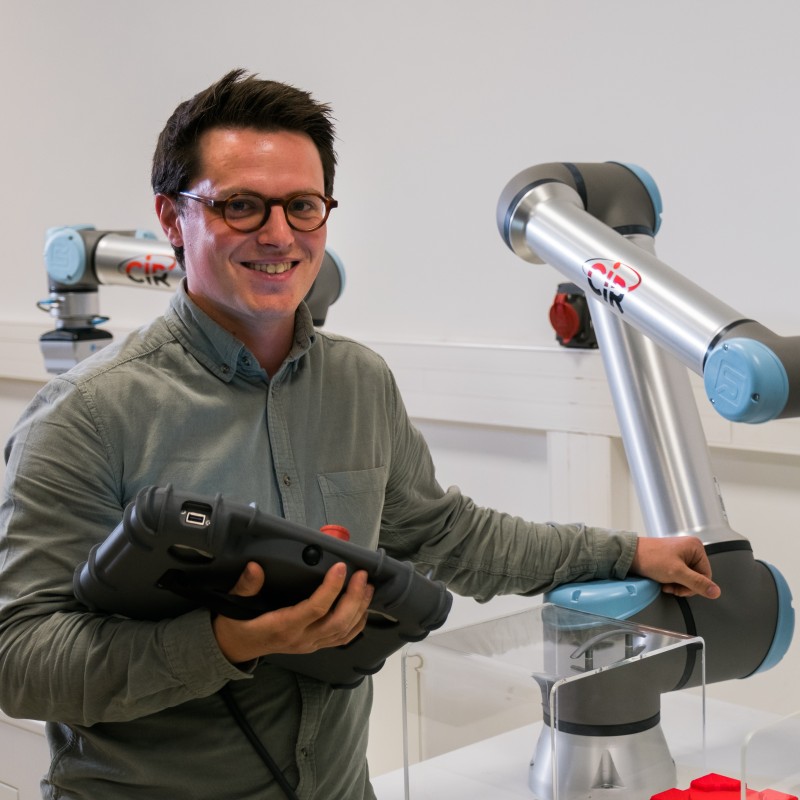
Leave a comment